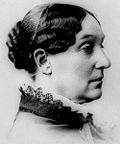- Oregon Compulsory Education Act
-
The Compulsory Education Act or Oregon School Law was a 1922 law in the U.S. state of Oregon that required school age children to attend only public schools. The United States Supreme Court later struck down the law as unconstitutional.
Contents
Background
In 1922, the Masonic Grand Lodge of Oregon sponsored a bill to require all school-age children to attend public schools. With support also of the state Ku Klux Klan and 1922 Democratic gubernatorial candidate Walter M. Pierce, the Compulsory Education Law was passed by a vote of 115,506 to 103,685. Its primary purpose was to shut down Catholic schools in Oregon, but it also affected other private and military schools. It was challenged in court and struck down by the United States Supreme Court Pierce v. Society of Sisters (1925) before it went into effect.
The law, which was officially called the Compulsory Education Act and unofficially became known as the Oregon School Law, did not just require that children between the ages of eight and sixteen had to attend school; it required that they attend only public schools. By prohibiting children from attending private or parochial schools, the state thus forced such schools to close.
Outraged Catholics organized locally and nationally for the right to send their children to Catholic schools. In a 1925 decision, the United States Supreme Court declared the Oregon School Law unconstitutional in a ruling that that has been called "the Magna Carta of the parochial school system." In the ruling, the Court asserted that "the child is not the mere creature of the state" and settled once and for all the question of whether or not private schools had a right to exist in America.
Pope Pius XI, in 1929, explicitly referenced this Supreme Court case in his encyclical Divini illius magistri[1] on Catholic education. He quoted this part of the case, which says:
The fundamental theory of liberty upon which all governments in this Union repose excludes any general power of the State to standardize its children by forcing them to accept instruction from public teachers only. The child is not the mere creature of the State; those who nurture him and direct his destiny have the right coupled with the high duty, to recognize, and prepare him for additional duties.
See also
Further reading
- Lloyd P. Jorgenson. "The Oregon School Law of 1922: Passage and Sequel," The Catholic Historical Review, Vol. 54, No. 3 (Oct., 1968), pp. 455–466 in JSTOR
- David B. Tyack. "The Perils of Pluralism: The Background of the Pierce Case,"American Historical Review, Vol. 74, No. 1 (Oct., 1968), pp. 74–98 in JSTOR
- Text of Pierce v. Society of Sisters, 268 U.S. 510 (1925) is available from: Justia · Findlaw
References
- ^ Pope Pius XI (1929-12-31). "Divini illius magistri". http://www.vatican.va/holy_father/pius_xi/encyclicals/documents/hf_p-xi_enc_31121929_divini-illius-magistri_en.html. Retrieved 2010-8-17.
Topics in Oregon legislation Crime and sentencing Capital punishment · Measure 11 (1994) (mandatory minimum sentencing) · Measure 40 (1996) etc. (victims' rights) Abigail Scott Duniway was instrumental in establishing women's right to vote in Oregon.
Abigail Scott Duniway was instrumental in establishing women's right to vote in Oregon.
Elections and voting Gay rights Environment Land use Health care Minimum wage Taxation Tax revolt · Measure 5 (1990) (landmark tax law) · Measures 47 (1996) and 50 (1997) (adjusted Measure 5) · Kicker (tax rebate)Miscellaneous Compulsory Education Act · Adoption rights · Alcoholic beverages in Oregon · Bicycle Bill · Cannabis in OregonInfluential people Background, further reading Categories:- Oregon law
- 1922 in law
- Anti-Catholicism in the United States
- Ku Klux Klan
- 1922 in Oregon
Wikimedia Foundation. 2010.
